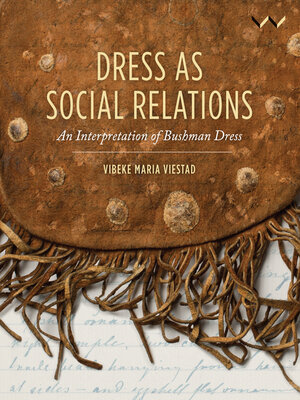
Sign up to save your library
With an OverDrive account, you can save your favorite libraries for at-a-glance information about availability. Find out more about OverDrive accounts.
Find this title in Libby, the library reading app by OverDrive.



Search for a digital library with this title
Title found at these libraries:
| Library Name | Distance |
|---|---|
| Loading... |
To dress is a uniquely human experience, but practices and meanings of dress vary greatly among people. In a Western cultural tradition, the practice of dressing 'properly' has for centuries distinguished 'civilised' people from 'savages'. Through travel literature and historical ethnographic descriptions of the Bushmen of southern Africa, such perceptions and prejudices have made their mark also on the modern research tradition. Because Bushmen were widely considered to be 'nearly naked' the study of dress has played a limited part in academic writings on Bushman culture. In Dress as Social Relations Vibeke Maria Viestad challenges this myth of the nearly naked Bushman and provides an interdisciplinary study of Bushman dress, as it is represented in the archives and material culture of historical Bushman communities. Maintaining a critical perspective, Viestad provides an interpretation of the significance of dress for historical Bushman people. Dress, she argues, formed an embodied practice of social relations between humans, animals and other powerful beings of the Bushman world; moreover, this complex and meaningful practice was intimately related to subsistence strategies and social identity. The historical collections under scrutiny present a wide variety of research material representing different aspects of the bodily practice of dress. Whereas the Bleek & Lloyd archive of oral myths and narratives has become renowned for its great research potential, the artefact collections of Dorothea Bleek and Louis Fourie are much less known and have not earlier been published in a richly illustrated and comprehensive way. Dress as Social Relations is aimed at scholars and students of archaeology, anthropology, material culture studies, dress studies, ethnographic studies, museology, culture historical studies and African studies, but will also be of interest to people of descendant communities.|To dress is a uniquely human experience, but practices and meanings of dress vary greatly. In a Western cultural tradition, the practice of dressing 'properly' distinguished 'civilised' people from 'savages'. Such prejudices made their mark on historical ethnographic descriptions of the Bushmen of southern Africa. Because Bushmen were considered to be 'nearly naked' the study of dress has played a limited part in academic writings on Bushman culture. Vibeke Maria Viestad challenges this myth and provides a study of Bushman dress as it is represented in the material culture of historical Bushman communities in the artefact collections of Dorothea Bleek and Louis Fourie. Dress, she argues, formed an embodied practice of social relations between humans, animals and other powerful beings and was intimately related to subsistence strategies and social identity. The historical collections studied have research material representing different aspects of the bodily practice of dress that are much less known and published than the well-studied archives of oral myths and narratives.|Indexed in Clarivate Analytics Book Citation Index (Web of Science Core Collection)







